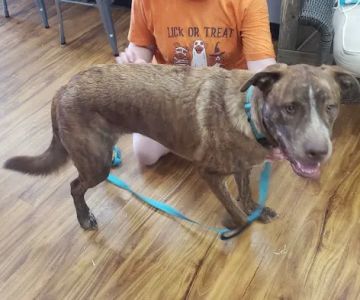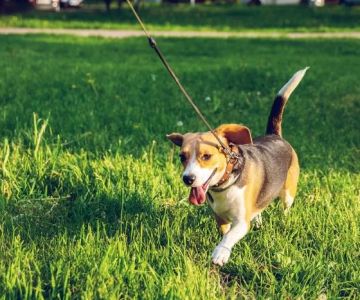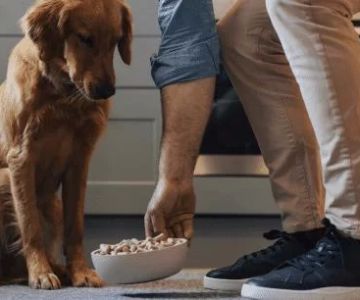- -signs-your-dog-is-overweight-and-what-to-do
- -dog-overweight-symptoms
- -how-to-tell-if-your-dog-is-overweight
- -dog-weight-management
- -obesity-in-dogs
Signs Your Dog is Overweight and What to Do
As pet owners, we want to ensure our dogs are healthy and happy, but one issue that often goes unnoticed is being overweight. Obesity in dogs can lead to several health problems, including heart disease, arthritis, and diabetes, which can significantly reduce your dog’s quality of life. In this article, we’ll discuss the signs your dog is overweight and what steps you can take to help them get back to a healthy weight.
1. Why Weight Management is Important for Dogs
Just like humans, maintaining a healthy weight is essential for your dog's overall health. Dogs that are overweight or obese are at a higher risk for chronic diseases, including joint issues, heart problems, and even a shortened lifespan. Weight management is crucial for ensuring that your dog enjoys a long, healthy, and active life.
1.1 The Impact of Obesity on Your Dog's Health
Obesity can lead to numerous complications, including:
- Joint Issues: Excess weight puts additional strain on your dog’s joints, leading to conditions like arthritis, particularly in older dogs or those with pre-existing joint problems.
- Heart Disease: Overweight dogs are at an increased risk for heart disease due to the strain excess weight puts on the heart.
- Diabetes: Obesity is one of the primary risk factors for diabetes in dogs, as it affects insulin production and glucose regulation.
- Reduced Quality of Life: Obesity can lead to reduced energy levels, decreased mobility, and overall discomfort for your dog.
2. How to Recognize If Your Dog is Overweight
Recognizing the signs of overweight in your dog is the first step to addressing the issue. There are several visible signs and behavioral clues that can help you determine if your dog is carrying extra weight.
2.1 Visible Signs: Lack of a Defined Waistline
One of the most common signs that your dog is overweight is the lack of a visible waistline. When looking at your dog from above, their waist should be narrower than their chest. If your dog’s body appears more rectangular or round, this could indicate excess weight.
2.2 Difficulty with Physical Activity
Overweight dogs may struggle with activities they once enjoyed, like running, walking, or playing. They may tire more quickly or seem unwilling to engage in exercise. If your dog used to be active but now hesitates to move or becomes easily exhausted, it could be a sign that their weight is affecting their stamina and mobility.
2.3 Excessive Fat Around the Ribcage
Another indicator of obesity is the presence of excess fat around the ribcage. Ideally, when you press gently on your dog’s sides, you should be able to feel their ribs. If you can't feel the ribs or if the area feels soft or cushioned, your dog may be overweight. However, this should be checked by a veterinarian for an accurate assessment.
3. What to Do If Your Dog is Overweight
If you’ve noticed the signs of overweight in your dog, don’t worry – there are steps you can take to help your dog reach a healthier weight. Below are practical tips to manage and reduce your dog’s weight.
3.1 Consult with a Veterinarian
The first step in managing your dog’s weight is to consult with a veterinarian. Your vet will assess your dog’s overall health, determine their ideal weight, and provide a tailored weight-loss plan. This plan may include adjusting their diet, exercise routine, and possibly recommending weight management formulas or supplements.
3.2 Adjust Their Diet
Diet plays a crucial role in your dog’s weight. Switch to a high-quality, balanced dog food designed for weight management. These foods often have fewer calories and higher fiber content to keep your dog feeling full while losing weight. It’s important to measure your dog’s food portions and avoid overfeeding. Avoid giving table scraps, as many human foods are high in fat and can contribute to weight gain.
3.3 Increase Exercise and Activity Levels
Increasing your dog’s exercise is essential for weight loss. Gradually increase their daily walks, incorporating more active playtime, such as fetch or tug-of-war. Make sure the exercise is appropriate for your dog’s age and physical condition, as overexertion can lead to injury, particularly in older dogs or those with joint issues.
3.4 Avoid Treats and Snacks
While treats are often used to show affection, they can also contribute to weight gain. Reduce the number of treats and use healthier alternatives like carrots or small pieces of apple. Make sure to account for treats in your dog’s overall daily caloric intake.
3.5 Monitor Their Progress
Regularly monitor your dog’s weight to ensure they’re making progress. Weight loss should be gradual, and you should be able to notice improvements in their energy levels and physical ability. Keep track of your dog’s food intake and exercise, and keep in touch with your vet to adjust the plan if necessary.
4. Real-Life Case Study: Daisy’s Weight Loss Journey
Let’s look at Daisy, a six-year-old Labrador who struggled with obesity for several years. Her owner, Sarah, noticed that Daisy had gained weight and was becoming lethargic. She consulted with a veterinarian, who recommended a weight management plan that included a special diet and increased exercise. Sarah gradually reduced Daisy’s food portions and replaced high-calorie treats with healthier alternatives like carrots. Daisy’s walks increased from 20 minutes to 40 minutes a day, and Sarah was diligent about monitoring her progress. Over the course of six months, Daisy lost 10 pounds, and Sarah noticed a significant improvement in Daisy’s mobility and energy levels. Daisy is now more active, playing and running as she once did, and Sarah feels good knowing she’s providing Daisy with the best care for her health.
5. Prevention: Keeping Your Dog at a Healthy Weight
Prevention is key when it comes to obesity. Starting healthy habits early in your dog’s life can help them maintain a healthy weight throughout their life. Regular exercise, balanced nutrition, and portion control are essential for keeping your dog fit and healthy.
5.1 Choose the Right Breed for Your Lifestyle
If you are considering adopting a dog, think about the dog’s breed and its potential for weight gain. Some breeds are more prone to obesity than others, so make sure to select a breed that fits well with your lifestyle and exercise capacity. Your vet can help you determine the best breed for your family and lifestyle.
6. Conclusion: Taking the First Step Toward a Healthier Dog
Recognizing the signs of overweight in your dog is the first step toward improving their health. By consulting with a veterinarian and implementing a healthy diet and exercise routine, you can help your dog shed excess weight and live a longer, happier life. If you’re looking for guidance on managing your dog’s weight, visit Hidden Brook Veterinary for expert advice and support tailored to your dog’s specific needs.











